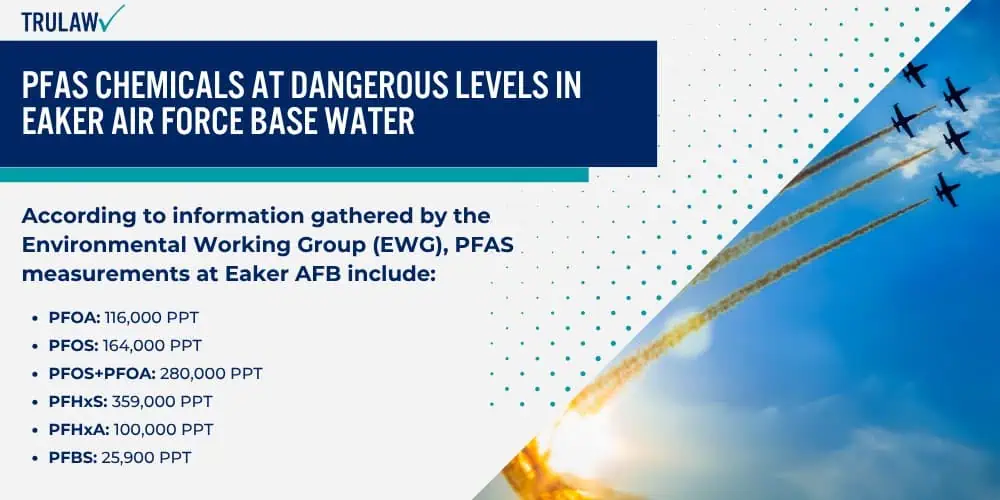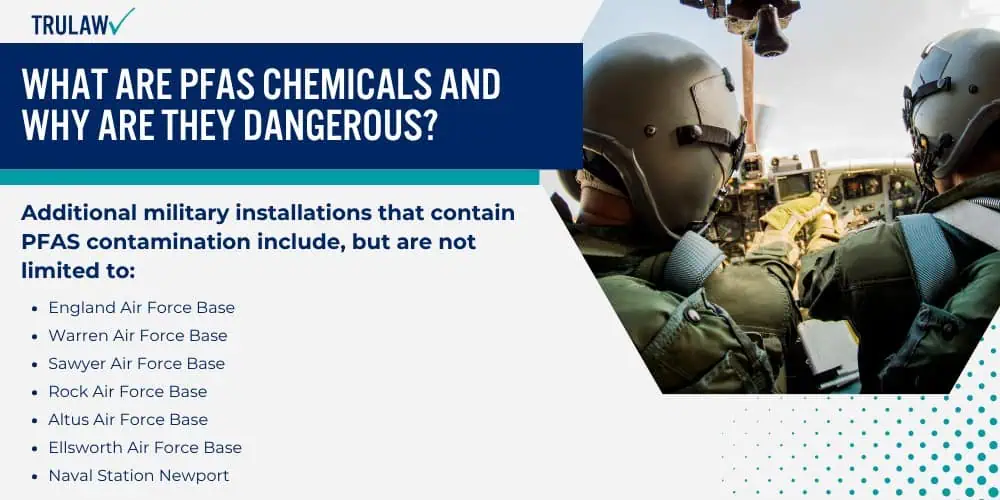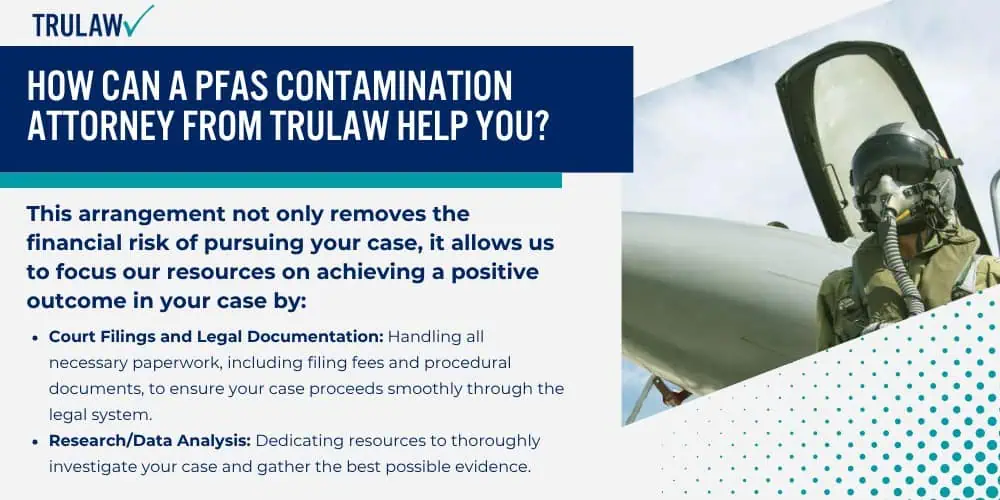Historical application of aqueous film-forming foam (AFFF) during firefighting training exercises and emergency responses represents the primary source of PFAS contamination at the installation.

Testing performed at Eaker Air Force Base revealed PFAS concentrations vastly exceeding the Environmental Protection Agency’s (EPA) current advisory threshold of 4 parts per trillion (ppt) for drinking water.
According to information gathered by the Environmental Working Group (EWG), PFAS measurements at Eaker AFB include:
- PFOA: 116,000 PPT
- PFOS: 164,000 PPT
- PFOS+PFOA: 280,000 PPT
- PFHxS: 359,000 PPT
- PFHxA: 100,000 PPT
- PFBS: 25,900 PPT
These concerning measurements highlight the urgent necessity for remediation efforts and enhanced accountability.
PFAS contamination at these concentrations presents substantial risks to neighboring communities, service members, and surrounding ecosystems dependent on nearby water resources.
Exposure to such extreme PFAS levels can lead to serious health consequences, including cancer, liver damage, immune system impairment, and developmental issues in children.
Residents and former base personnel who depended on the water supply for consumption, food preparation, and other daily activities may have unknowingly experienced prolonged exposure to these harmful substances.
The data emphasizes the importance of addressing PFAS contamination at Eaker AFB to safeguard public health and restore environmental safety.
Cleanup Efforts at Eaker Air Force Base
Remediation initiatives at Eaker Air Force Base target extensive PFAS contamination in groundwater and soil resulting from historical firefighting foam (AFFF) usage.
The Environmental Protection Agency (EPA) and Department of Defense (DoD) are working jointly on remediation approaches by incorporating advanced filtration technologies such as granular activated carbon and reverse osmosis to reduce PFAS concentrations.
Monitoring programs have been established to regularly assess water supplies and ensure public safety while long-term solutions are developed.
These efforts aim to restore environmental integrity, minimize health risks, and ensure responsible parties are held accountable for contamination.






